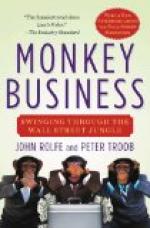“But you said they were, the experts said they were.”
“We were mistaken; they are almost identical, but not quite; in shape and size they are identical, in the number and placing of the nails in the heel they are identical, in the worn places they are identical, but when you compare them under the magnifying glass, this photograph of the footprints with this one of the boot soles, you see unmistakable differences in the scratches on separate nails in the heel, unmistakable differences.”
Hauteville shrugged his shoulders. “That’s cutting it pretty fine to compare microscopic scratches on the heads of small nails.”
“Not at all. Don’t we compare microscopic lines on criminals’ thumbs? Besides, it’s perfectly plain,” insisted Coquenil, absorbed in his comparison. “I can count forty or fifty nail heads in the heel, and none of them correspond under the glass; those that should be alike are not alike. There are slight differences in size, in position, in wear; they are not the same set of nails; it’s impossible. Look for yourself. Compare any two and you’ll see that they were never in the same pair of boots!”
With an incredulous movement Hauteville took the glass, and in his turn studied the photographs. As he looked, his frown deepened.
“It seems true, it certainly seems true,” he grumbled, “but—how do you account for it?”
Coquenil smiled in satisfied conviction. “Kittredge told you he had three pairs of boots; they were machine made and the same size; he says he kept them all going, so they were all worn approximately alike. We have the pair that he wore that night, and another pair found in his room, but the third pair is missing. It’s the third pair of boots that made those alleyway footprints!”
“Then you think—” began the judge.
“I think we shall have found Martinez’s murderer when we find the man who stole that third pair of boots.”
“Stole them?”
Coquenil nodded.
“But that is all conjecture.”
“It won’t be conjecture to-morrow morning—it will be absolute proof, unless——”
“Unless what?”
“Unless Kittredge lied when he told that girl he had never suffered with gout or rheumatism.”
CHAPTER XVII
“FROM HIGHER UP”
A great detective must have infinite patience. That is, the quality next to imagination that will serve him best. Indeed, without patience, his imagination will serve him but indifferently. Take, for instance, so small a thing as the auger used at the Ansonia. Coquenil felt sure it had been bought for the occasion—billiard players do not have augers conveniently at hand. It was probably a new one, and somewhere in Paris there was a clerk who might remember selling it and might be able to say whether the purchaser was Martinez or some other man. M. Paul believed it was another




